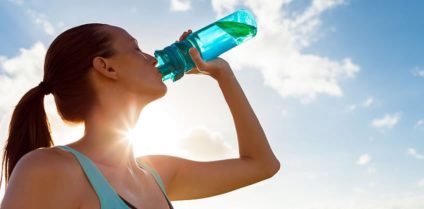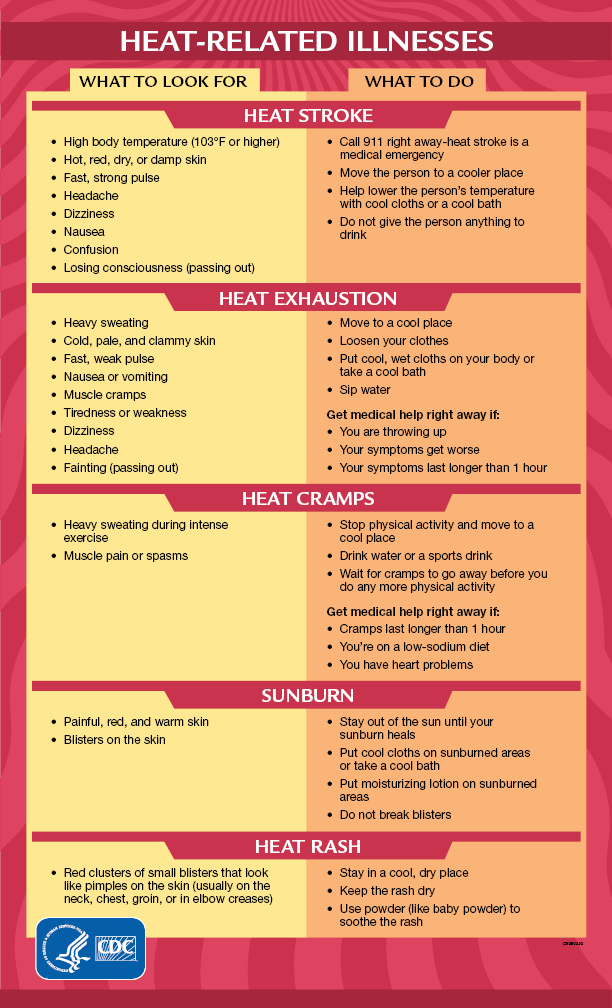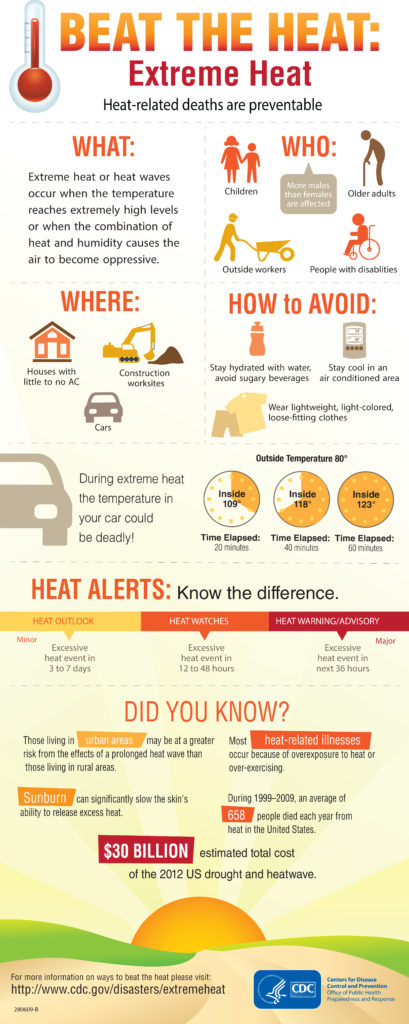The post Be Active In Warm Weather Safely appeared first on .
]]>There is a risk of heat related sickness and even fatalities in hotter weather. According to the Centers for Disease Control and Prevention, from 2004 to 2018 an average of 712 heat-related deaths occurred in the U.S. annually, and extreme heat sends more than 65,000 Americans to the emergency room each year.
There are things you can do to prevent heat stress and the risks that come with hotter weather.
Effects of Heat
Heat can cause minor symptoms, such as heat cramps, to life-threatening conditions such as heat exhaustion and heatstroke. Before we look at these, let’s examine the body’s natural mechanism to regulate body temperature: Sweating. The hypothalamus, a part of the brain, helps govern the body’s baseline temperature (roughly 98.6 F). When your temperature becomes too high or low, the brain sends signals to organs, muscles, and the nervous system to do what it needs to do to get the body back to normal. (sweating, shivering, etc.)
Temperatures of more than 104 F combined with relative humidity of 60% can weaken the body’s cooling mechanism and can affect the body’s ability to function. This can cause damage to the brain and major organs. This is why ignoring heat, and ignoring the first signs of heat stress can lead to dangerous conditions and even death.
Heat Symptoms
These are some of the common symptoms to look out for:
Heat Cramps typically occur after intense exertion in high heat and cause thirst, sweating, fatigue, and painful cramps in the arms, legs, or abdomen.
Heat Exhaustion is brought on by excessive loss of salt and water. It can result in weakness, headache, thirst, vomiting, muscle cramps and dizziness. If treated promptly, the symptoms typically last 30 to 60 minutes or less, with complete recovery within 24 to 48 hours.
Heatstroke occurs when the body loses the ability to sweat and fails to cool down. It is a life-threatening condition and needs urgent medical attention. Symptoms include hot and dry skin, high fever, rapid heart rate, confusion, fatigue, dizziness, nausea, seizures, and unconsciousness. Without promptly addressing symptoms, heatstroke can cause damage to the brain and internal organs, and death.
Who’s At Risk
When we look at the groups that are at highest risk for heat injury, they include the very young, the very old, people who are less fit, and those who partake in extreme sports for long periods. Additionally, people who are obese, have chronic medical conditions, who are on certain medications, work outdoors, or who work in hot indoor conditions can also be at higher risk.
Prevention
Preventing heat injuries can be accomplished by proper preparation and good preventive care. I was a fitness fanatic when I was in the Army, and I know my better fitness helped me deal with the heat more easily. I also made sure to stay hydrated. And maybe I’m just less prone to heat injuries than some, as heat has never really bothered me much. Here are a few things you can do to reduce risk.
Dress light and wear a hat. Lightweight, light-colored, loos-fitting clothing allows air circulation and transfers heat away from the body. Light colors and fabrics such as cotton, loose linen and rayon keep the body cool. Sun protective clothing and a well vented, wide-brimmed hat or a loose cotton bandanna help regulate body heat. And even if you don’t have the “best” protective headgear, anything can be better than nothing. So use whatever hat you have available, and improvise if you must, just protect your head from the sun.
Stay hydrated. This is important, so I’ll say it again, Stay hydrated. Drink plenty of water during hot weather. The more you exercise or exert yourself, the more water you will need. While water is usually considered the best, other fluids will also help you stay hydrated, as well as eating foods with high water content. Foods such as watermelon, strawberries, blueberries, raspberries, tomatoes, cucumbers, cantaloupe, cabbage, celery, spinach and zucchini are not only very healthy for you, but they are also good foods to heat during hot weather to help you stay hydrated.
Limit exertion during hottest times. If possible, refrain from exercising or exerting yourself during the hottest midday heat. Schedule training and work, if you can, during the cooler parts of the day. If you must work or exercise in the heat, shorten the intensity and duration to reduce risk, and wear moisture-wicking fabrics. Stop if you begin to overheat. Get to the shade or inside someplace cool. An icepack to the back of your neck can help you cool down, and be sure to drink plenty of cold water or a sports drink if you prefer.
Be Informed. Pay attention to the forecast to know the temperature and heat index for the times and locations you will be at, and plan accordingly. Summer is a time to have a lot of fun. Just be aware of the heat, how it can affect you, and enjoy your summer safely!
- Suja Natarajan’s article Hot Topic in the July 21 edition of Costco Connection was a source for helping with this article.
- Graphics from CDC
What to Do for Heatstroke
Heatstroke can be life-threatening. Know how to identify early signs and then:
- Call 911.
- Move the person to a shaded and cool area and raise their legs and feet slightly.
- Loosen the person’s clothes and remove unnecessary clothing, shoes, and socks.
- Rehydrate the person with water or a sports drink.
- Lower the person’s body temperature with a cold compress or fans.
- Monitor the person’s temperature every few minutes.
The post Be Active In Warm Weather Safely appeared first on .
]]>


